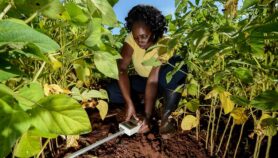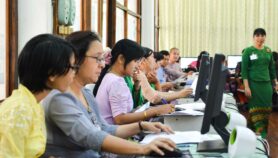Send to a friend
The details you provide on this page will not be used to send unsolicited email, and will not be sold to a 3rd party. See privacy policy.
The key factors to successful open-source drug discovery (OSDD) which could lead to developing treatments for neglected diseases, seem to be clearly defined entry points, transparency and funding, says a study.
Despite differences in the way such projects are implemented, they still result in high-quality research at reduced costs, according to the study published in PLOS Neglected Tropical Diseases last month (20 September).
The study aimed to provide a basis on which other initiatives could refine and expand the open source model, through identifying important aspects of two successful OSDD projects — the Council of Scientific and Industrial Research Team India Consortium’s Open Source Drug Discovery project (CSIR OSDD) and The Synaptic Leap’s Schistosomiasis project (TSLS).
It analysed each group’s website and literature, along with conducting member interviews and surveying potential members. From this emerged three ingredients key to success.
Firstly, there must be a clear entry point — how volunteers join and contribute to the project — to maximise effectiveness.
Secondly, transparency throughout the collaborative process is essential. This can be achieved by posting raw data in the public domain such as in TSLS, or through openness and trust between members cultivated in CSIR OSDD, the study says.
Lastly, although open source projects rely largely on volunteers, funding for laboratories and physical supply costs; staff salaries; and administration, was also critical.
While cautioning that the study’s limited scope meant the findings could not be generalised to all OSDD projects, the authors hoped that the research would help guide future initiatives by showing how the concept works in practice.
Christine Årdal, a researcher at the global health unit at the Norwegian Knowledge Centre for the Health Services, and a co-author of the study, said that by showing that there was no one "recipe" for success, the case studies could encourage others within the neglected disease research community and beyond to explore the full potential of the open source approach.
She added that there was little stopping the field from developing further and called on governments who fund neglected disease research and development to make the open source approach mandatory, unless researchers gave a good reason not to.
Stephen Maurer, professor of public policy and law at the University of California, Berkley — who was one of the first to propose OSDD for tropical diseases — agreed that the guidance the case studies provided for other projects was a "really important" step.
But the free labour model, which both projects in the study employed, only skimmed the surface of open source’s potential, he cautioned.
What projects really need is free data, Maurer added.
"If you could extend these models to include drug company employees who have access to huge pools of data, and they can surface it in a way that is responsible … that would be huge."
Link to full study in PLOS Neglected Tropical Diseases
PLOS Neglected Tropical Diseases doi: 10.1371/journal.pntd.0001827 (2012)













